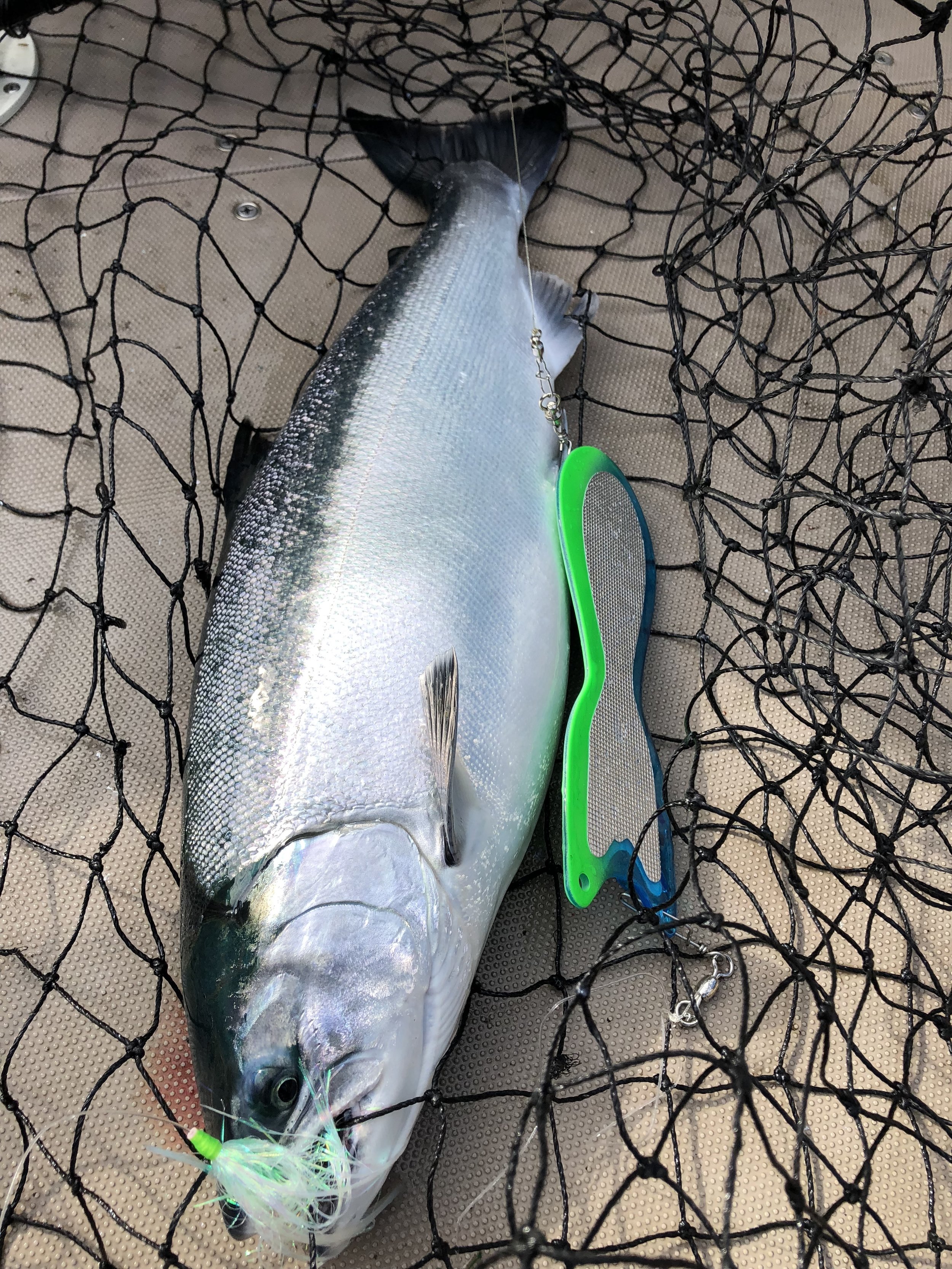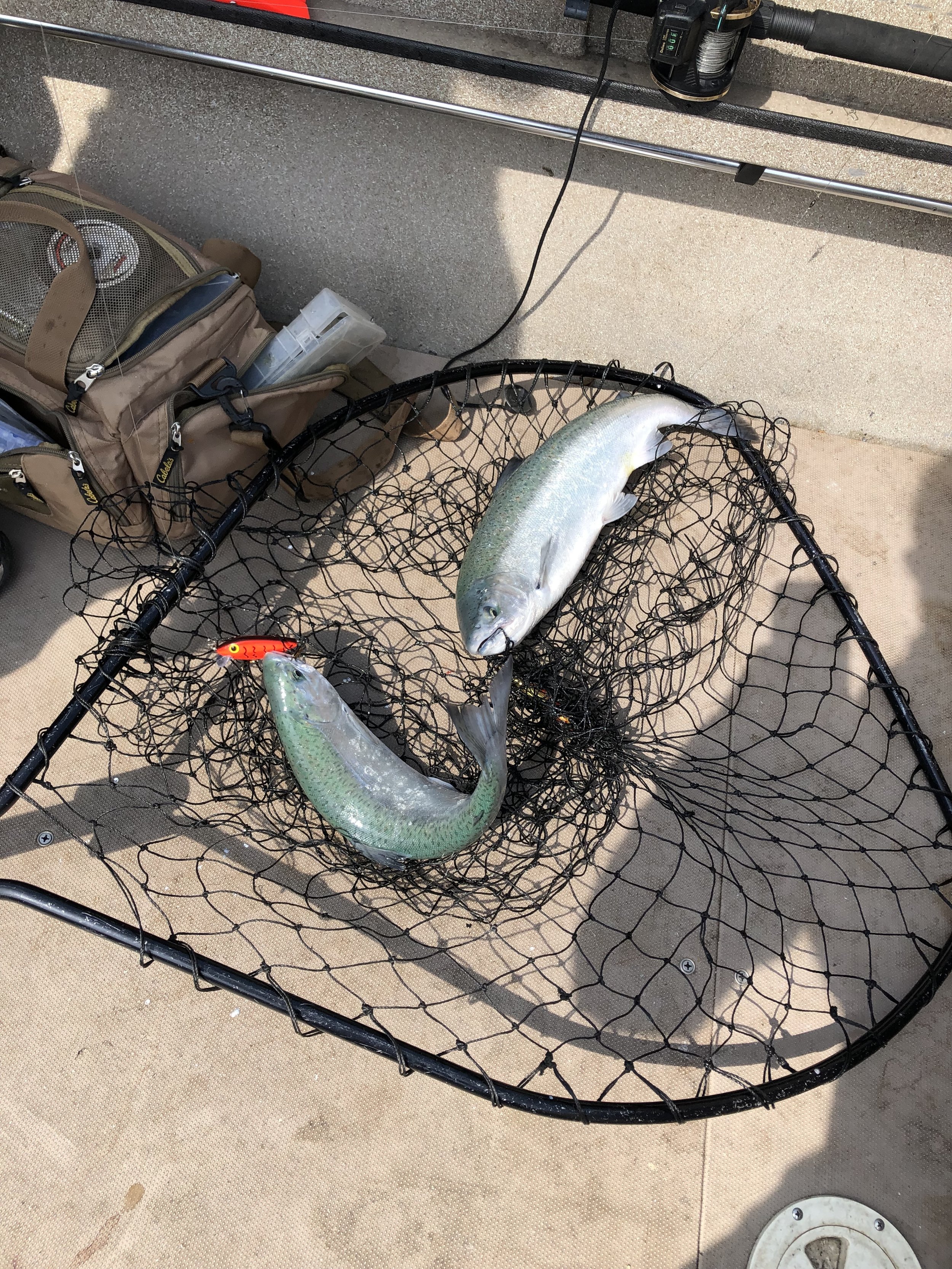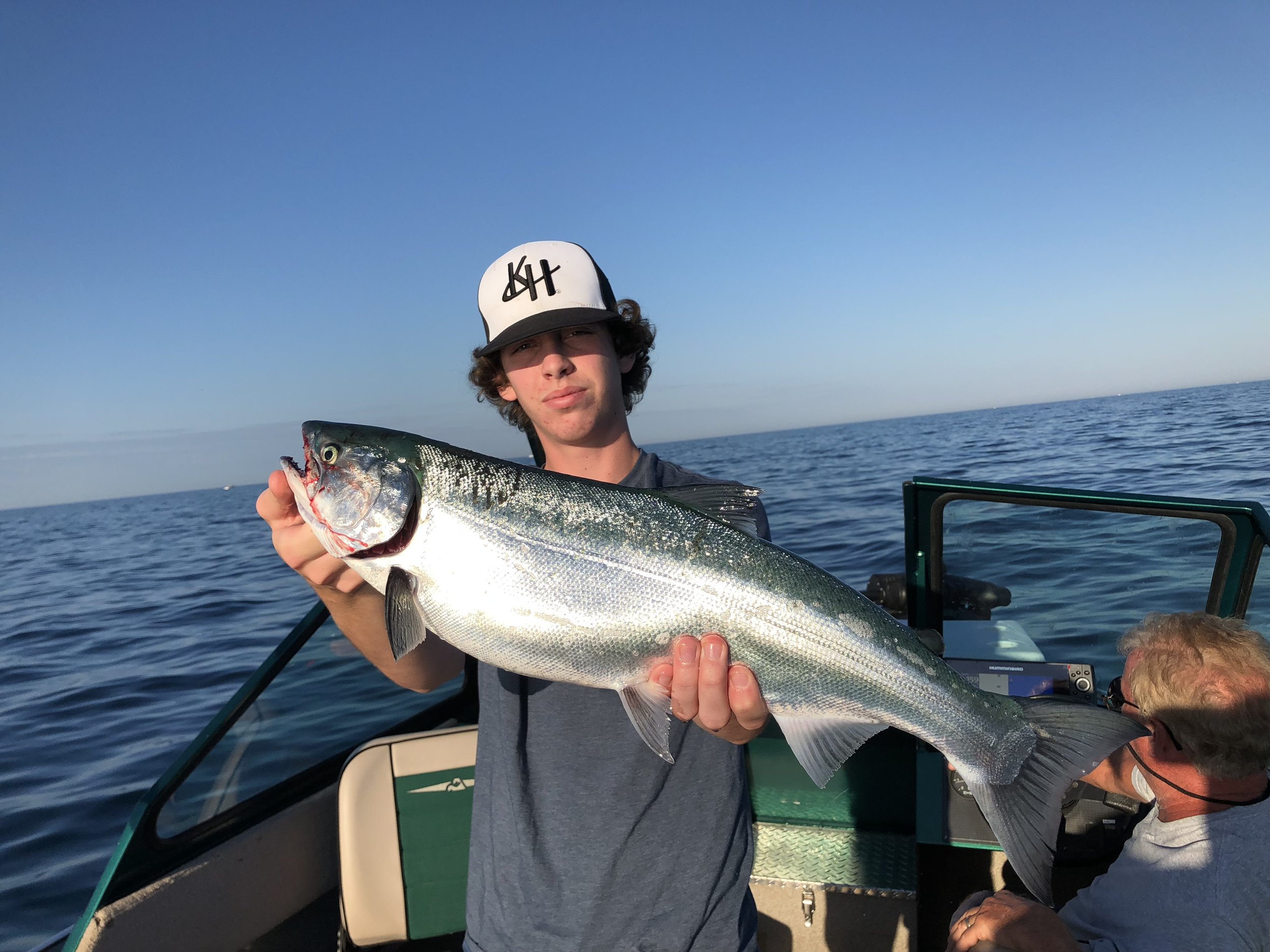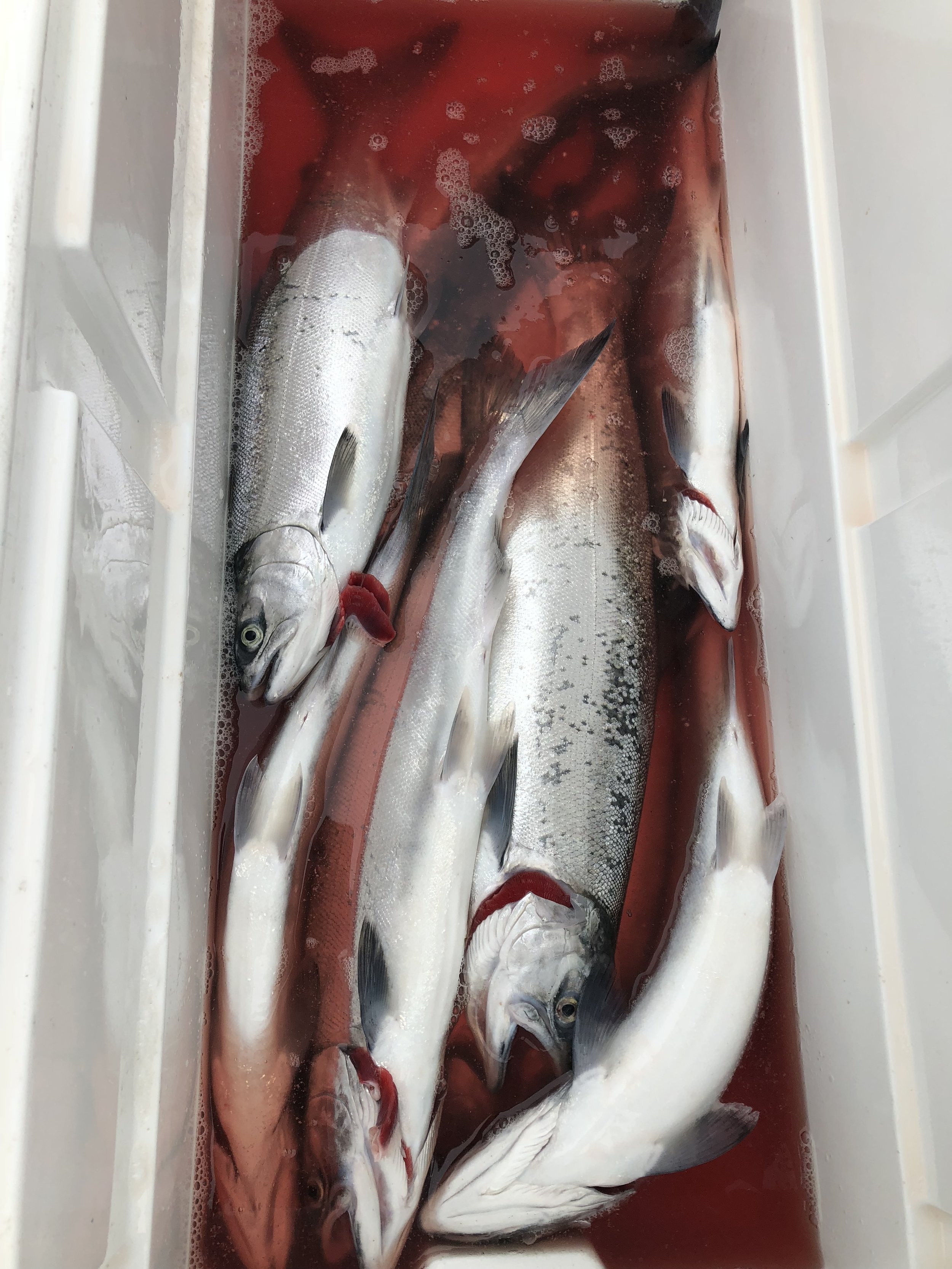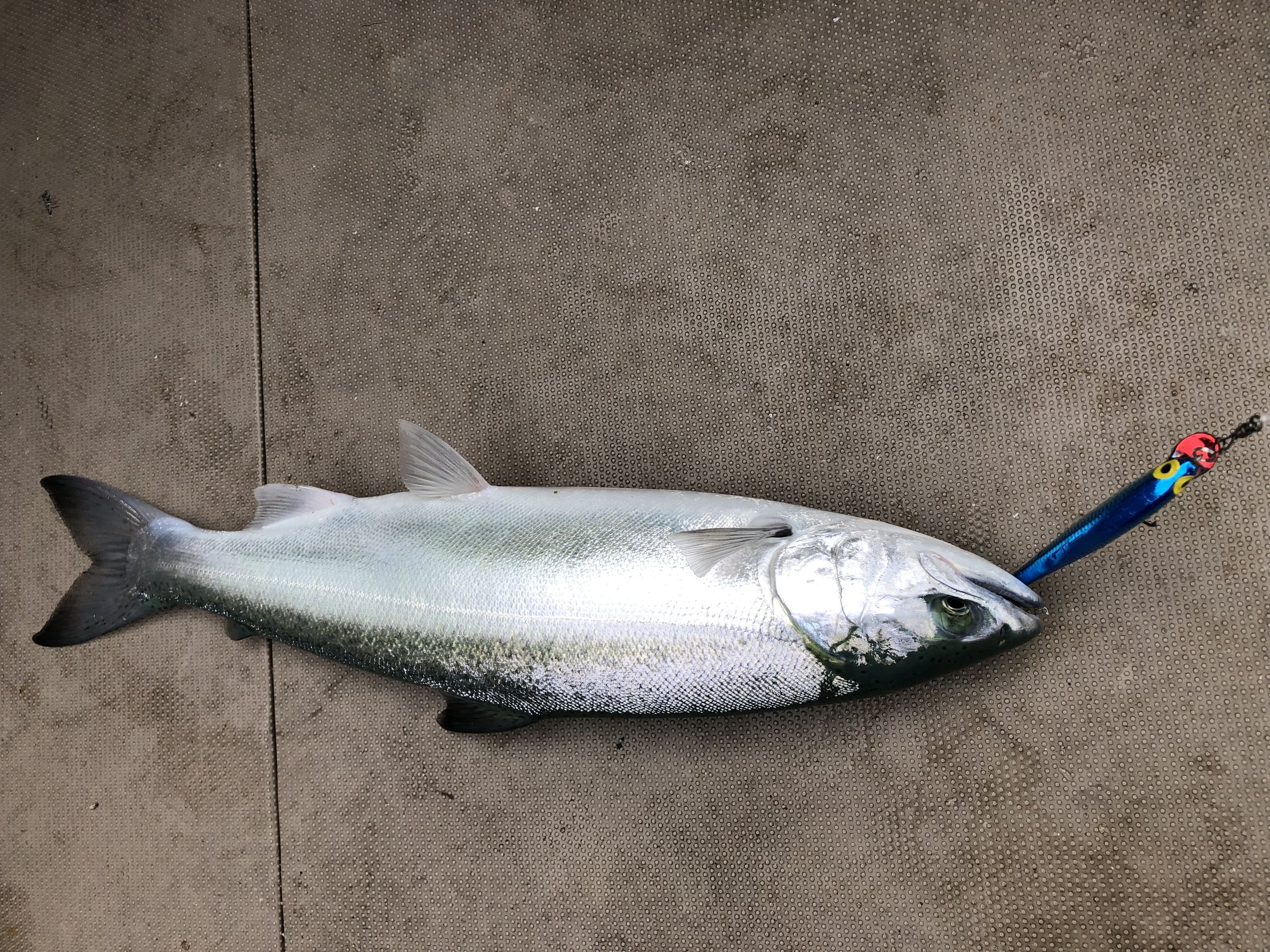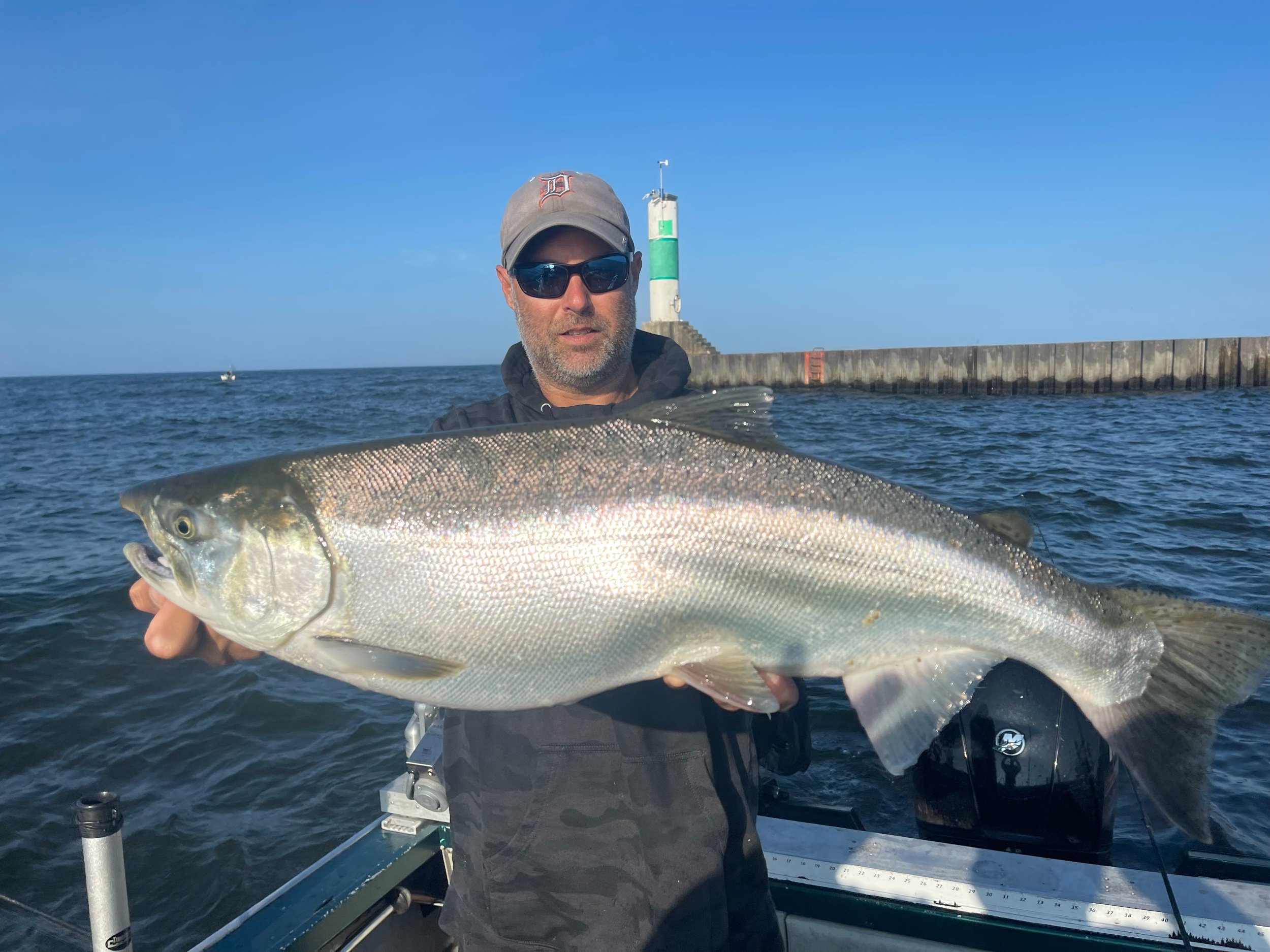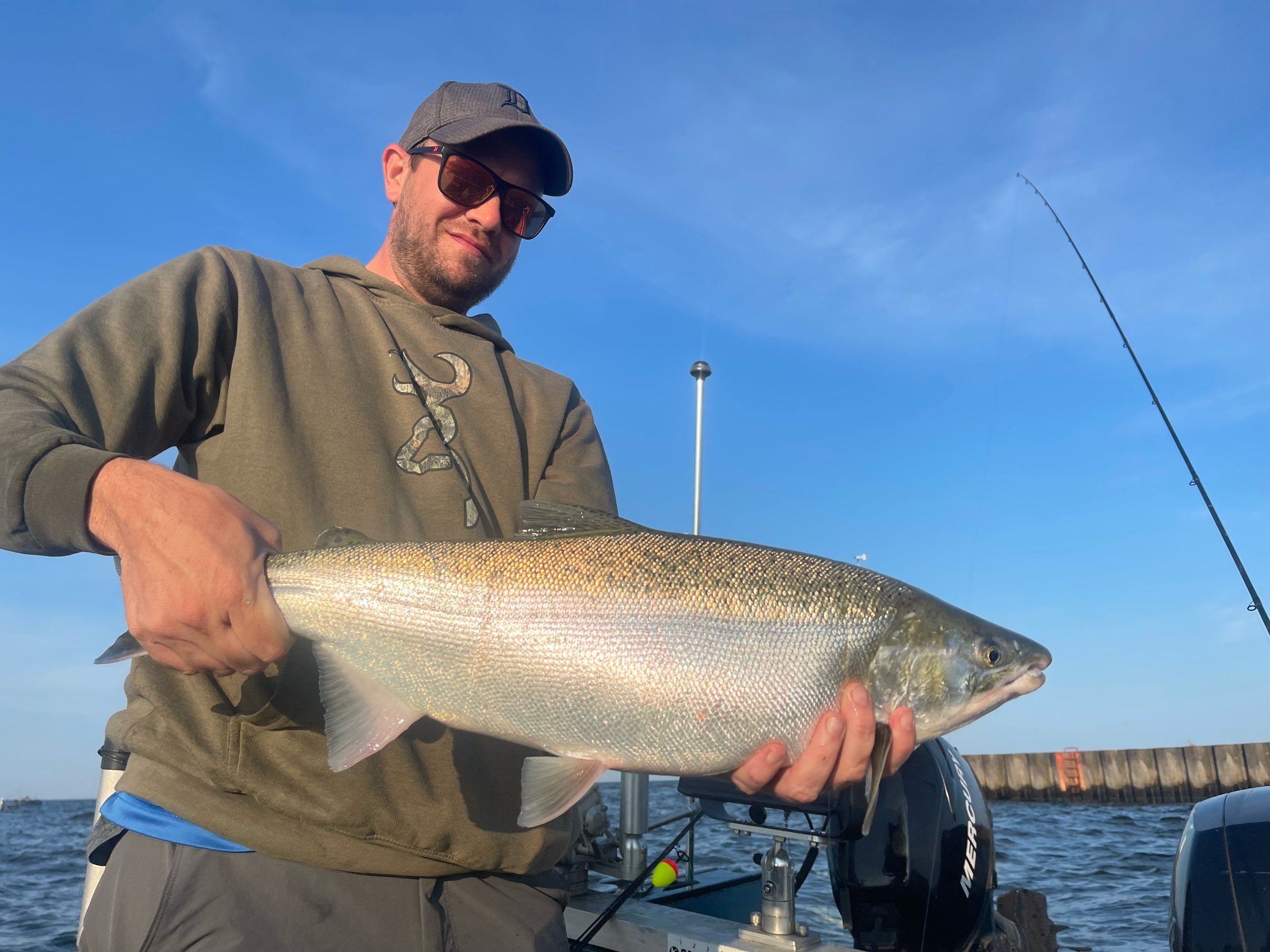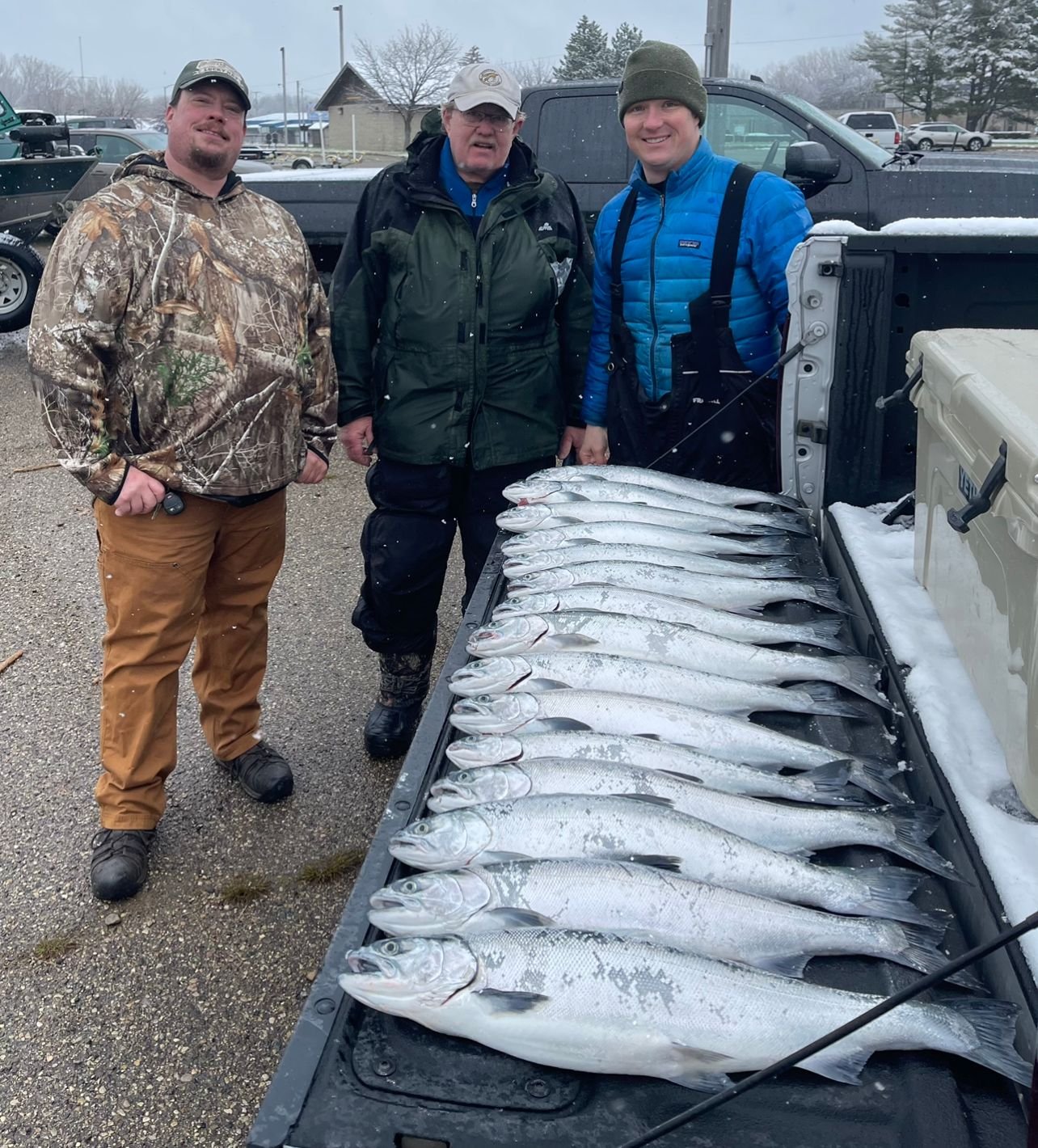Coho Salmon
Like the Chinook, coho are native to the Pacific coast of North America, and to parts of Asia. They were introduced into the Great Lakes in 1873 but the first successful plantings weren't until 1966. There was much excitement amount anglers and fish managers when coho made their first spawning run in the fall of 1967. Since that time, the coho has become a popular sport fish, in fact people come from all over the world to fish Michigan's great coho fishery.
Coho spawning runs up tributary rivers occur from early September to early October. Females excavate a nest in a tributary stream's gravel bed. Both adult die soon after spawning. The next spring the eggs hatch and the young remain in the gravel for 2-3 weeks. When they emerge (March to July), some migrate down river almost immediately. Most, however, wait a year or longer before descending to the lake.Once in the lake, they stay near shore for a few months, then seek deeper waters.
Coho are very aggressive in Nature which makes them a great fish to pursue in Lake Michigan as well as some of our West Michigan rivers. We pursue them with light tackle and use a variety of techniques to give your arms a work out.
Lake Michigan fishing for coho is usually really good in February thru April just before the King Salmon action heats up. Late August into September can offer some good trolling and jigging opportunities. They are available in the river from September through January depending on the river system.
